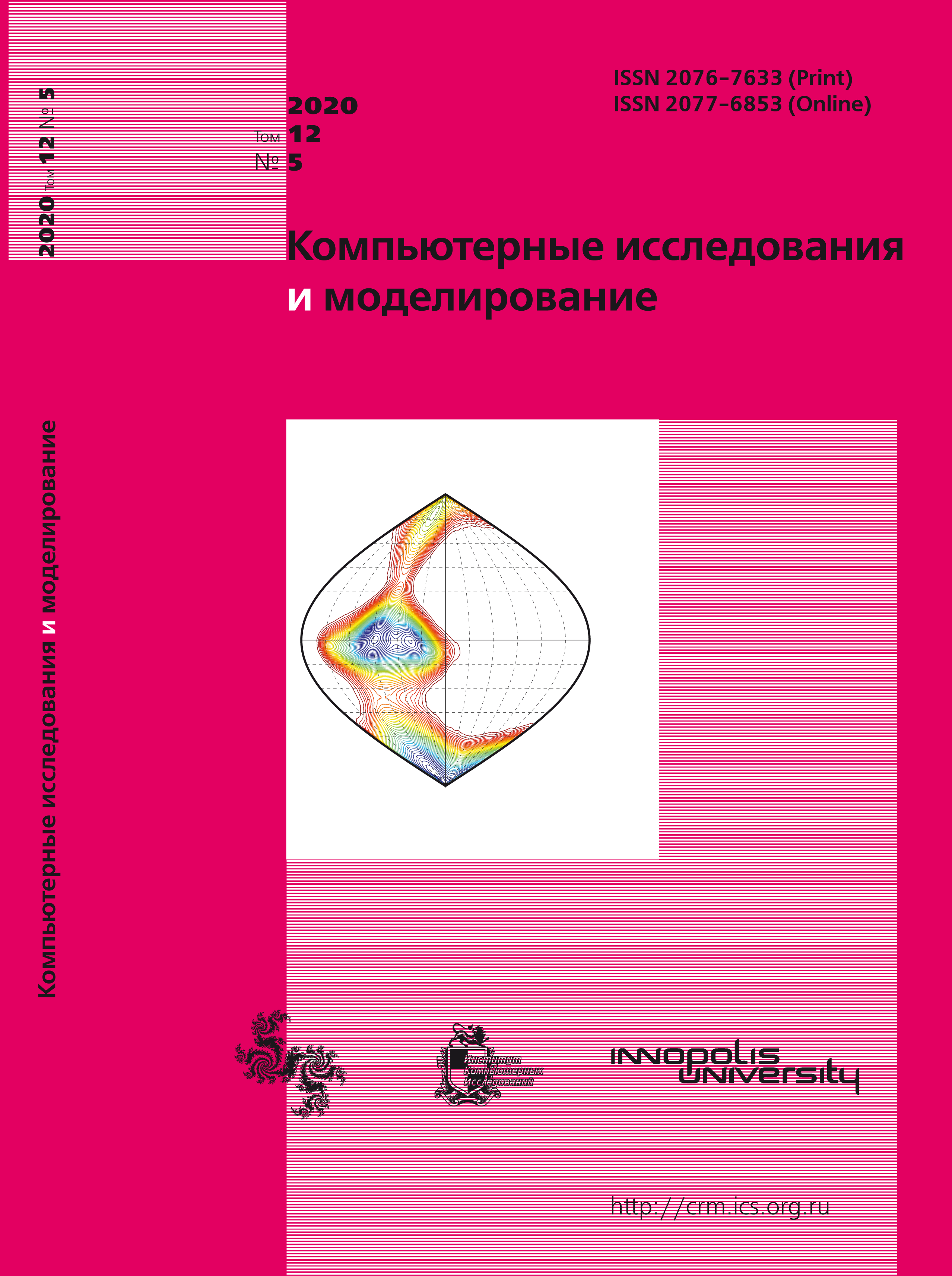All issues
- 2025 Vol. 17
- 2024 Vol. 16
- 2023 Vol. 15
- 2022 Vol. 14
- 2021 Vol. 13
- 2020 Vol. 12
- 2019 Vol. 11
- 2018 Vol. 10
- 2017 Vol. 9
- 2016 Vol. 8
- 2015 Vol. 7
- 2014 Vol. 6
- 2013 Vol. 5
- 2012 Vol. 4
- 2011 Vol. 3
- 2010 Vol. 2
- 2009 Vol. 1
Simulation of the gas condensate reservoir depletion
 pdf (273K)
pdf (273K)
One of problems in developing the gas condensate fields lies on the fact that the condensed hydrocarbons in the gas-bearing layer can get stuck in the pores of the formation and hence cannot be extracted. In this regard, research is underway to increase the recoverability of hydrocarbons in such fields. This research includes a wide range of studies on mathematical simulations of the passage of gas condensate mixtures through a porous medium under various conditions.
In the present work, within the classical approach based on the Darcy law and the law of continuity of flows, we formulate an initial-boundary value problem for a system of nonlinear differential equations that describes a depletion of a multicomponent gas-condensate mixture in porous reservoir. A computational scheme is developed on the basis of the finite-difference approximation and the fourth order Runge .Kutta method. The scheme can be used for simulations both in the spatially one-dimensional case, corresponding to the conditions of the laboratory experiment, and in the two-dimensional case, when it comes to modeling a flat gas-bearing formation with circular symmetry.
The computer implementation is based on the combination of C++ and Maple tools, using the MPI parallel programming technique to speed up the calculations. The calculations were performed on the HybriLIT cluster of the Multifunctional Information and Computing Complex of the Laboratory of Information Technologies of the Joint Institute for Nuclear Research.
Numerical results are compared with the experimental data on the pressure dependence of output of a ninecomponent hydrocarbon mixture obtained at a laboratory facility (VNIIGAZ, Ukhta). The calculations were performed for two types of porous filler in the laboratory model of the formation: terrigenous filler at 25 .„R and carbonate one at 60 .„R. It is shown that the approach developed ensures an agreement of the numerical results with experimental data. By fitting of numerical results to experimental data on the depletion of the laboratory reservoir, we obtained the values of the parameters that determine the inter-phase transition coefficient for the simulated system. Using the same parameters, a computer simulation of the depletion of a thin gas-bearing layer in the circular symmetry approximation was carried out.
Copyright © 2020 Volokhova A.V., Zemlyanay E.V., Kachalov V.V., Rikhvitskiy V.S.
Indexed in Scopus
Full-text version of the journal is also available on the web site of the scientific electronic library eLIBRARY.RU
The journal is included in the Russian Science Citation Index
The journal is included in the RSCI
International Interdisciplinary Conference "Mathematics. Computing. Education"






